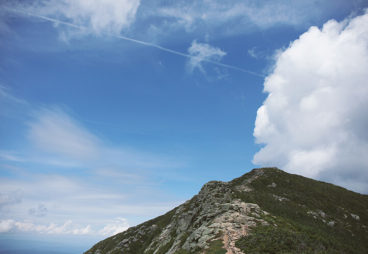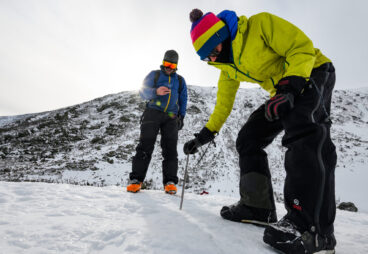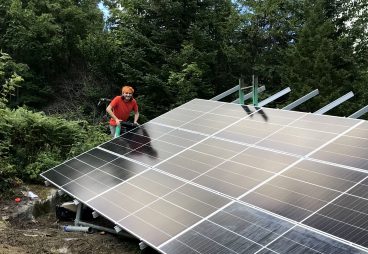

AMC's High Mountain Huts
Since 1888 AMC has managed backcountry huts on the high peaks of New Hampshire’s iconic White Mountain National Forest. Each of our eight huts is accessible only on foot and connected by the famed Appalachian Trail. Guests stay overnight in warm bunks and enjoy home-cooked meals from the Hut “Croo,” friendly staff living and working in the mountains. Join the tradition and explore the backcountry without the heavy pack.
Book Your Stay
The Adventure of a Lifetime
AMC’s huts bustle with activity while being surrounded by remote forests, glacial lakes, and rocky summits. By day they’re information centers where hikers rest, grab a snack, and check weather conditions. At night guests eat family-style dinners and sleep in bunkrooms with mattresses and blankets included.
When you stay at an AMC Hut, you'll enjoy:


On-trail backcountry lodging
Sleep with a roof over your head in the middle of the White Mountain National Forest. Sunrise and sunsets included!
A welcoming mountain community
Whether you’re thru-hiking or vacationing with the kids, there’s a place for you here. Meet hikers from across the world who have come for adventure in the White Mountains.
Home-cooked meals
Let the croo cook for you! Dinner and breakfast are included in your stay. Get a sneak peak of the Hut's dinner menu here.
Supporting the outdoors
Staying with one of America’s oldest conservation organizations means every dollar supports landscape protection, trail building, and outdoor opportunities for all.
Planning Your Stay
Accessible only by foot, each of AMC’s eight huts provide rustic hospitality to overnight guests through home-cooked dinners and breakfasts, comfortable bunks, cold-running water, and bathroom facilities. While all eight huts offer unmatched scenery in the backcountry, their elevation and distance from a trailhead vary. That means there’s a hut for you, whether you’re an experienced hiker or just getting started. Explore the tabs below to discover some of the many ways to experience the huts.
| Hut | Elevation* | Mileage from Trailhead** | Cumulative Elevation Gain*** | Route |
|---|---|---|---|---|
| Zealand Falls | 2,635 ft. | 2.7 miles | 714 ft. | From Zealand Rd. |
| Lonesome Lake | 2,775 ft. | 1.5 miles | 1,082 ft. | From Lafayette Campground |
| Mizpah Spring Hut | 3,793 ft. | 2.6 miles | 1,968 ft. | From Connector on Mt. Clinton Rd. |
| Carter Notch | 3,290 ft. | 3.7 miles | 2,032 ft. | via Nineteen Mile Brook Trail |
| Greenleaf | 4,200 ft. | 2.8 miles | 2,470 ft. | via Old Bridle Path |
| Lakes of the Clouds | 5,014 ft. | 2.9 miles | 2,635 ft. | via Ammonoosuc Ravine Trail from lower USFS hiker parking lot |
| Galehead | 3,777 ft. | 4.5 miles | 2,368 ft. | via Gale River Trail |
| Madison Spring | 4,795 ft. | 3.6 miles | 3,538 ft. | via Valley Way |
- *Elevation based on 1-meter resolution Lidar.
- **Mileage based on surficial 3D distance derived from 1-meter resolution Lidar; may differ from guidebook stats.
- ***Cumulative Elevation Gain is not the net gain (differential) between TH and Hut; it is the amount of uphill only.
Spend multiple nights on the trail with a hut-to-hut traverse. Hut-to-hut trips are a great way to see some of the most iconic places in the White Mountains, like the Presidential Range and Pemigewasset Wilderness. The difficulty of hiking to each hut varies by location. Our hut system includes options for experienced hikers as well as beginners and families. View availability across the hut system here.
Distances between Huts (West to East)
Cumulative Elevation Gain does not factor in the cumulative elevation loss - it is a tally of the uphill climbing only.
| Huts and Trails | Distance | Cumulative Elevation Gain |
|---|---|---|
| Lonesome to Greenleaf via Lonesome Lake Tr and Old Bridle Path (not the AT) | 4.5 miles | 2,540 ft. |
| Greenleaf to Galehead via Greenleaf Tr and Garfield Ridge Tr | 7.0 miles | 3,384 ft. |
| Galehead to Zealand Falls via Twinway | 6.4 miles | 2,018 ft. |
| Zealand Falls to Mizpah via Ethan Pond and Webster Cliff Trails (Not via Highland Center - see below) | 13.4 miles | 4,504 ft. |
| Mizpah to Lakes of the Clouds via Webster Cliff Trail and Crawford Path | 4.7 miles | 2,095 ft. |
| Lakes of the Clouds to Madison Spring via Crawford Path, Mt Washington summit, and Gulfside | 6.6 miles | 2,562 ft. |
| Madison Spring to Pinkham Notch Visitor Center via Osgood, Osgood Cutoff, Madison Gulf and Old Jackson Rd (AT) | 7.0 | 1,780 ft. |
| PNVC to Carter Notch via Lost Pond, Wildcat Ridge | 5.4 miles | 3,478 ft. |
| Zealand Falls to Highalnd Center via A-Z Trail and Avalon Trail | 5.4 miles | 1,543 ft. |
| Highland Center to Mizpah via Crawford Path and Mizpah Cutoff | 2.5 miles | 1,940 ft. |
AMC’s Guided Adventures sort out all the logistics and are led by AMC Guides who are with you every step of the way. They'll ensure you’re on the right path and provide insider knowledge of the trails, natural history and facilities throughout your trip. Check out our upcoming guided trips to the huts by clicking the button below.
Plan Your Trip with AMC’s Definitive Hiking Guides
White Mountain Guide: AMC's Comprehensive Guide to Hiking Trails in the White Mountain National Forest, 31st Edition
Trail Guide to Mount Washington and the Presidential Range: Abridged version of the above guide featuring the full Presidential Range and Great Gulf
Passport to AMC's High Huts in the White Mountains: Packable guidebook featuring history around the huts, suggested hikes and a passport section to gather stamps at each of the huts you visit.
Curious what's on the menu? View the Hut's weekly rotating dinner menu here.
Want help planning your Hut trip? Call our Trails Information Desk at 603-466-2721 for trail advice or our reservation staff at 603-466-2727.
Interested in planning a larger group trip? Contact our Group Sales Department at amcgroups@outdoors.org.
The Appalachian Mountain Club is an equal opportunity service provider. The AMC operates its system of backcountry huts in the White Mountain National Forest under special use permit from the US Forest Service.
Full-Service Season
Gear
- Backpack with waistbelt to carry extra layers, water and lunch, overnight gear
- Pack cover, trash bag or other pack liner
- Trekking Poles
- Two 1-liter water bottles or hydration system
- Sleeping bag rated 35 – 45 degrees, synthetic or down
- Travel pillow
- Headlamp/flashlight with extra batteries
- Hand towel, toiletries, personal medications
Outerwear
- Waterproof rain jacket with hood
- Waterproof rain pants
- Midweight fleece jacket or wool sweater
- Hiking pants/shorts depending on temperature
Clothing
- Synthetic t-shirts/long sleeves for each day
- Hiking socks (wool or synthetic) for each day plus one extra
- Lightweight thermal bottoms, synthetic or wool
- Down/synthetic insulated jacket or vest
- Wool or fleece hat
- Lightweight or liner gloves
Footwear
- Hiking boots or low-cut hikers, broken in
- Shoes for the hut: crocs, slippers, etc.
Other Essentials
- Map and compass
- First Aid Kit
- Emergency shelter, such as a mylar blanket
- Duct tape/gear repair kit
- Pocket knife/small multi tool
- Matches/Firestarter
- Sunglasses with retainer strap
- Sunblock and lip balm
- Extra food/snacks
- Whistle
- External battery for charging electronic devices
- Headphones/ear plugs for bunkroom
- Cash/card for hut purchases and gratuity
Self-Service Season
Gear
- Snowshoes
- Traction device: stabilizers, micro-spikes, etc.
- Backpack with waistbelt to carry extra layers, water and lunch, overnight gear
- Pack cover, trash bag or other pack liner
- Trekking poles
- Two 1-liter water bottles
- Sleeping bag, rated 0 to 20 degrees.
- Bringing a sleeping bag liner can add warmth without a lot of added weight
- Travel Pillow
- Headlamp/flashlight with extra batteries
- Hand towel, toiletries, personal medications
Outerwear
- Waterproof rain jacket with hood
- Waterproof rain pants
- Midweight fleece jacket or wool sweater
Clothing
- Mid or lightweight thermal tops, synthetic or wool
- Mid or lightweight thermal bottoms, synthetic or wool
- Fleece or wool pants
- Down or synthetic insulated jacket or vest
- Wool or wool blend hiking or ski socks, one for each day plus one extra
- Balaclava or neck gaiter for face protection
- Wool or fleece hat
- 2 pairs of heavy warm gloves or mittens
Footwear
- Insulated, waterproof winter hiking boots
- Insulated slippers or comfortable shoes for the hut
Other Essentials
- Sleeping bag liner for extra warmth
- Hand and toe warmers
- Gaiters
- Water bottle parkas or mittens/wool socks that fit around the bottle
- Thermos
- Map and compass
- First Aid Kit
- Emergency shelter, such as a mylar blanket
- Duct tape/gear repair kit
- Pocket knife/small multi tool
- Matches/Firestarter
- Sunglasses with retainer strap
- Sunblock and lip balm
- Extra food/snacks
- Whistle
- External battery for charging electronic devices
- Headphones/ear plugs for bunkroom
- Cash/card for hut purchases and gratuity
Location Information
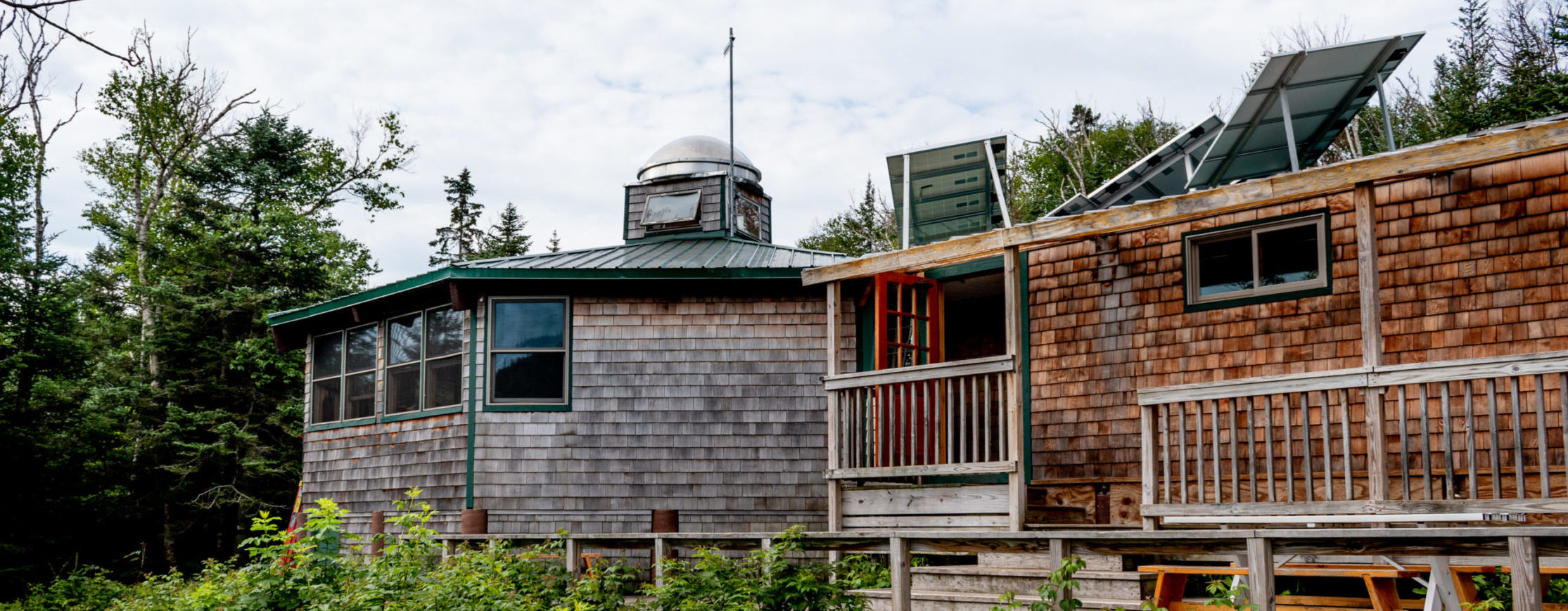

Lonesome Lake Hut
-
Meals Included
-
Water
-
Shuttle
Shuttle stop at the trailhead -
Hike-In
-
No dogs overnight
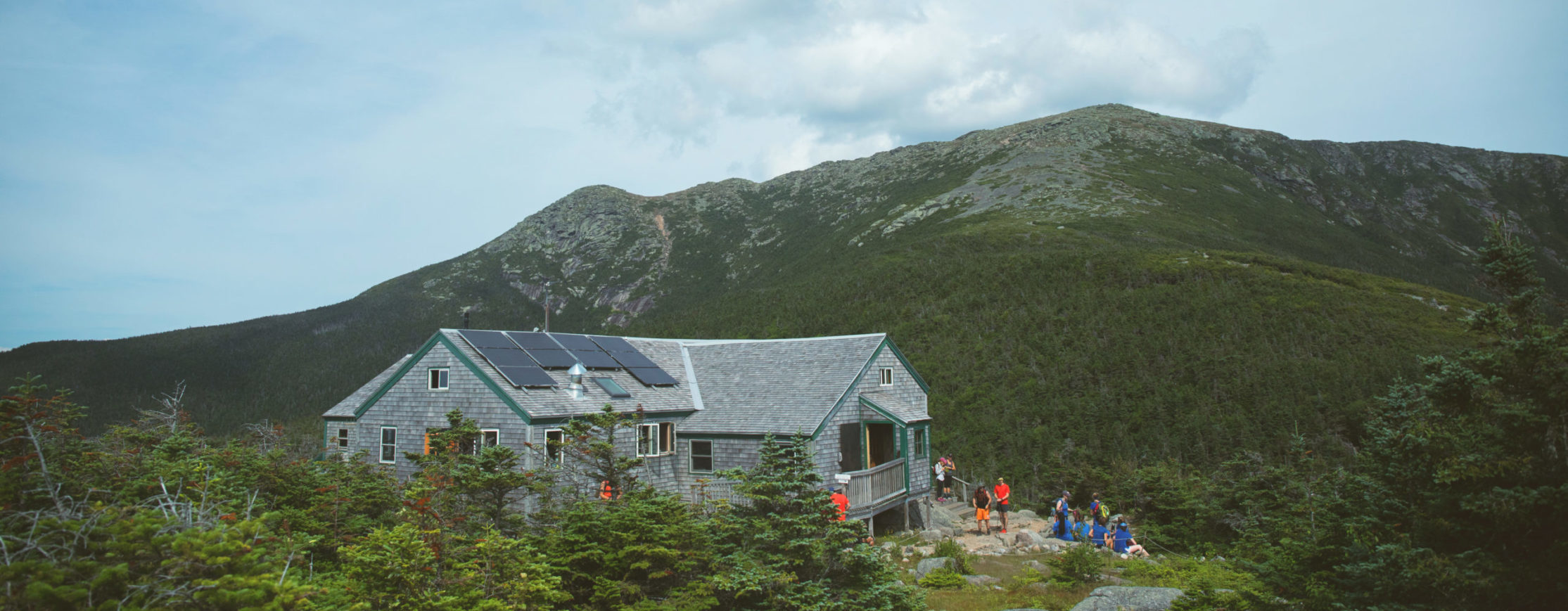

Greenleaf Hut
-
Meals Included
-
Water
-
Shuttle
Shuttle stop at the trailhead -
Hike-In
-
No dogs overnight
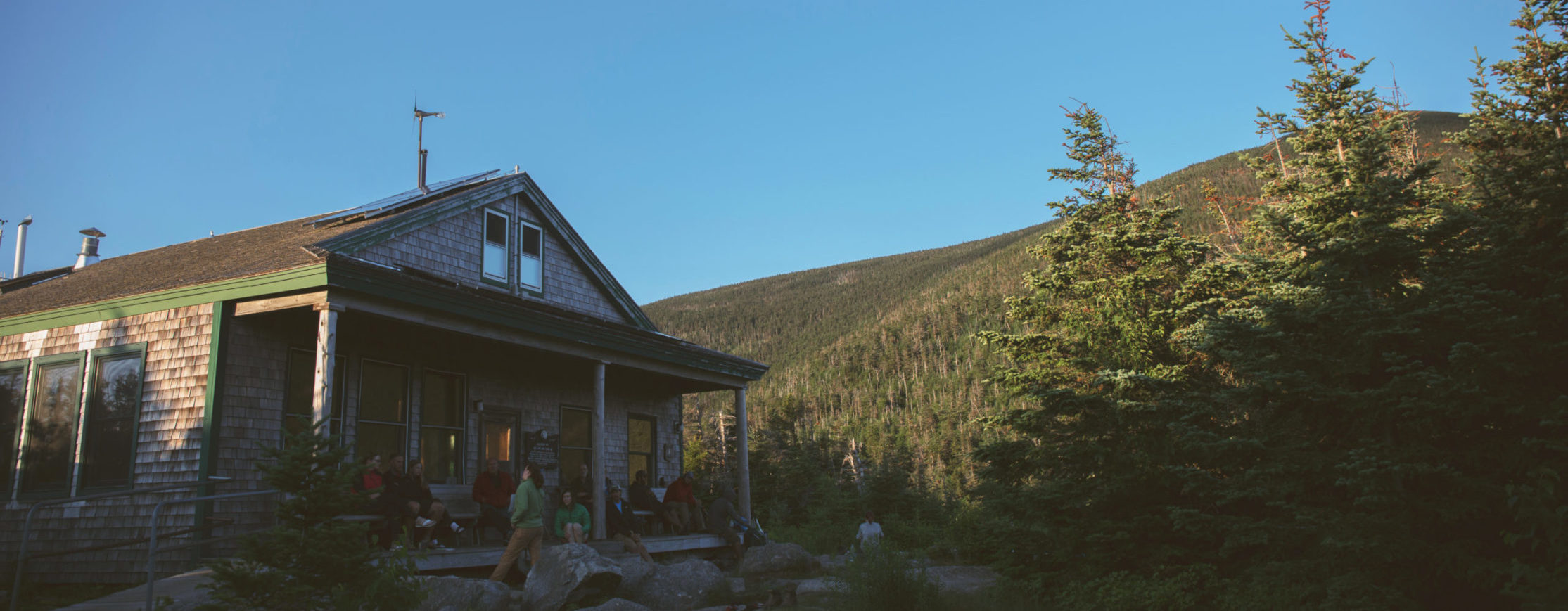

Galehead Hut
-
Meals Included
-
Water
-
Shuttle
Shuttle stop at trailhead -
Hike-In
-
No dogs overnight


Zealand Falls Hut
-
Meals Included
-
Water
-
Shuttle
Shuttle stop at trailhead -
Hike-In
-
No dogs overnight
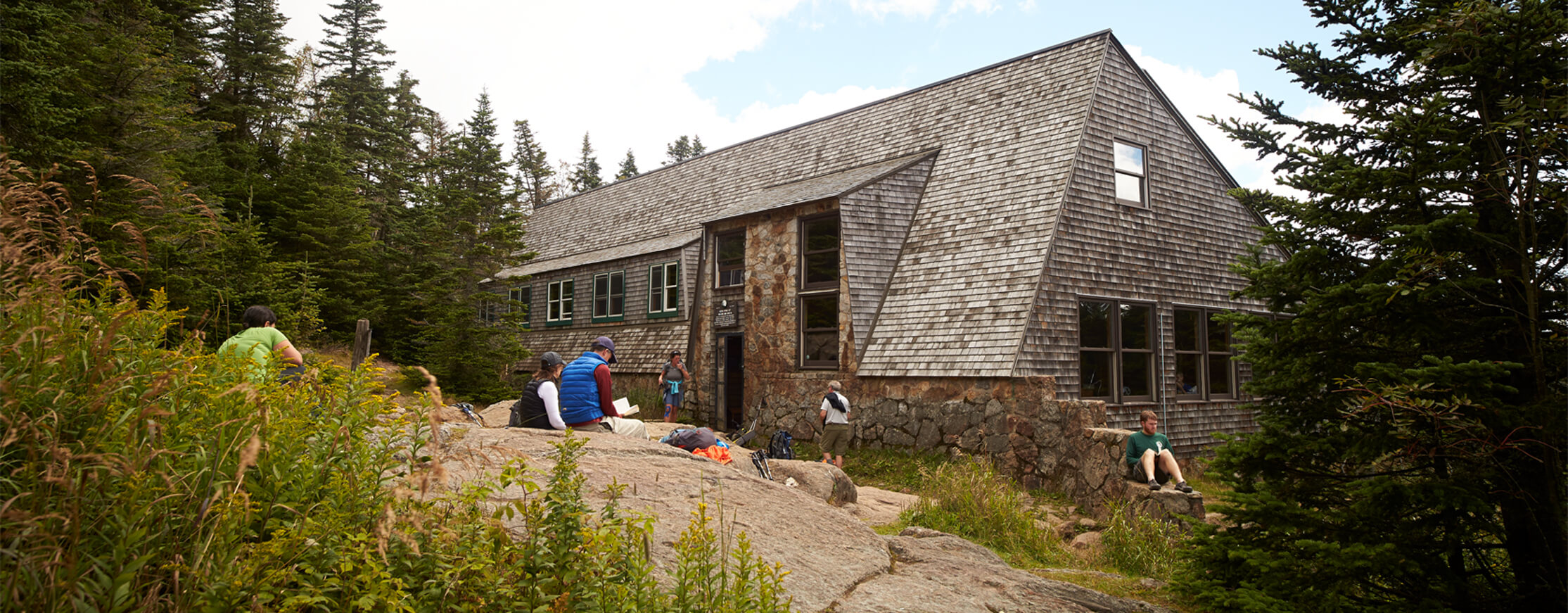

Mizpah Spring Hut
-
Meals Included
-
Water
-
Shuttle
Shuttle stop at trailhead -
Hike-in
-
No dogs overnight
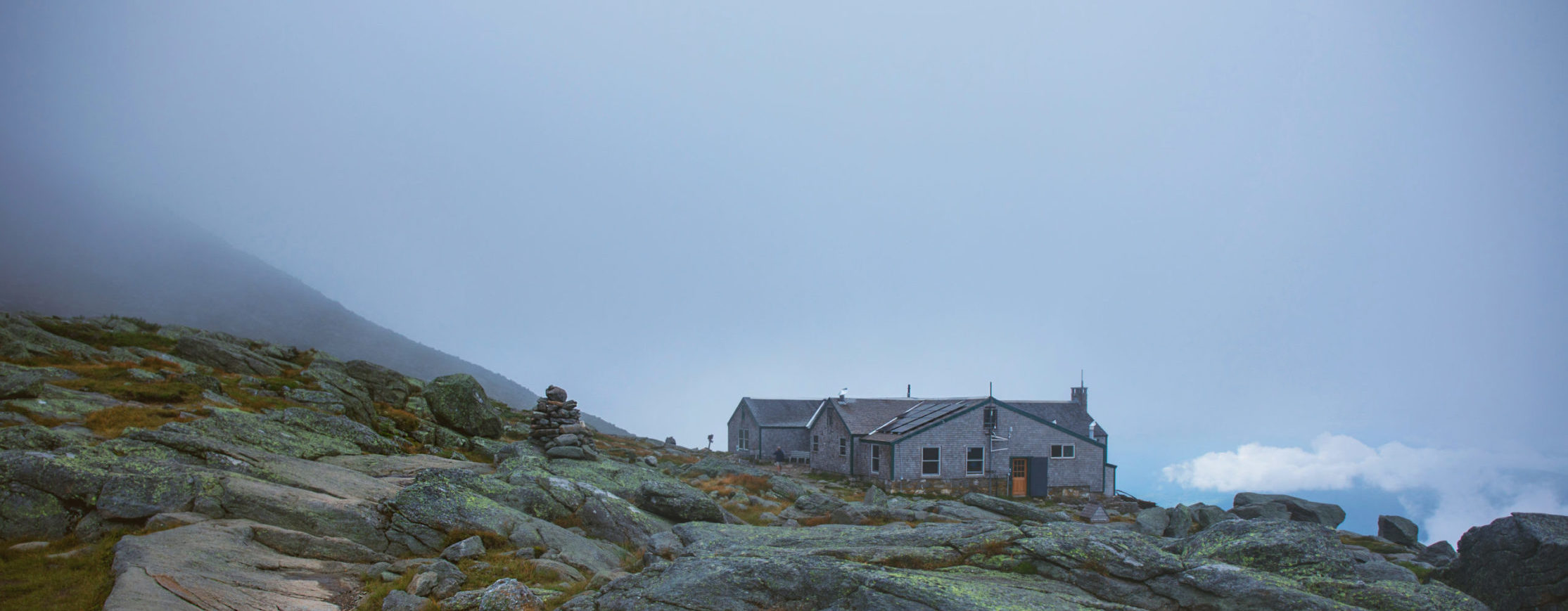

Lakes of the Clouds Hut
-
Meals Included
-
Water
-
Shuttle
Shuttle stop at the trailhead -
Hike-in
-
No dogs overnight
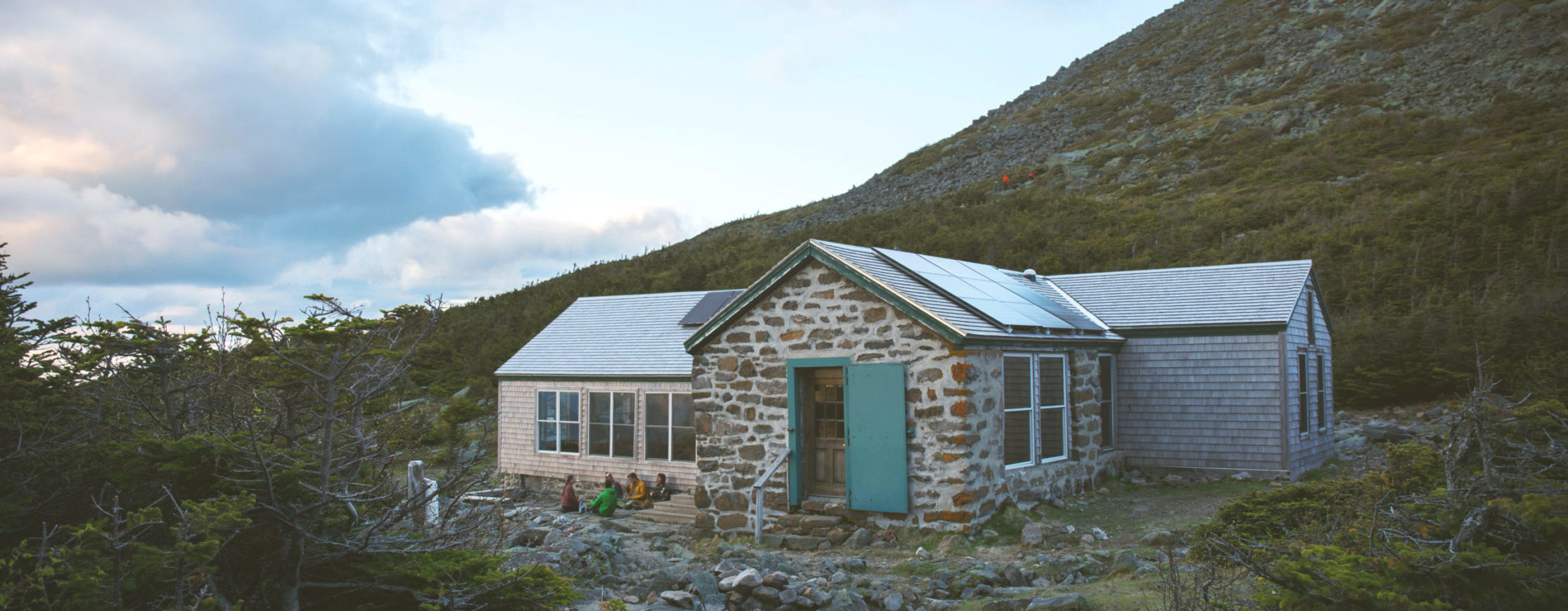

Madison Spring Hut
-
Meals Included
-
Water
-
Shuttle
Shuttle stop at trailhead -
Hike-in
-
No dogs overnight
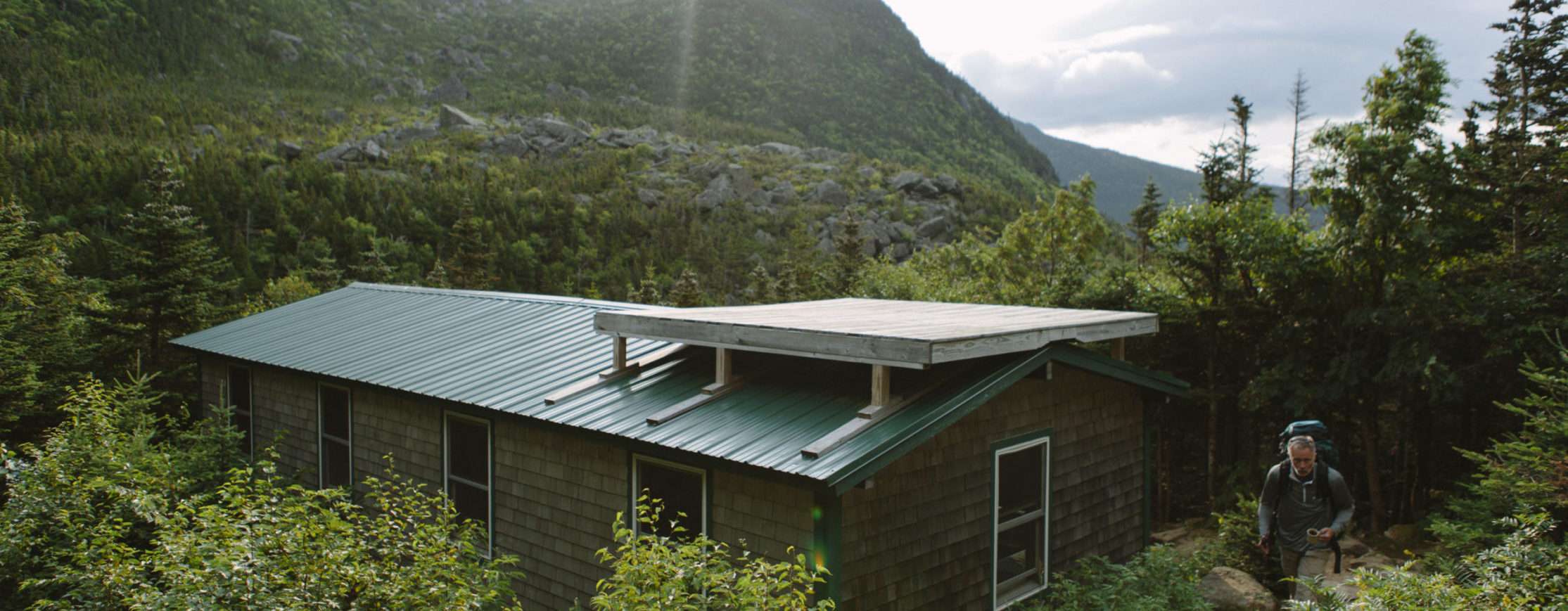

Carter Notch Hut
-
Meals Included
-
Water
-
Shuttle
Shuttle stop at the trailhead -
Hike-In
-
No dogs overnight
Protecting the White Mountains
AMC's huts aren’t just hiker retreats—they’re a key part of our century-plus mission to conserve and understand the unique ecology of New Hampshire’s high peaks. Every hut has an on-staff naturalist who gathers data for AMC researchers and leads educational presentations on the area’s plants, animals, geology, and natural history. Croo and volunteers also engage hikers in community science initiatives that support long-term environmental monitoring.


Learn more about AMC’s unique approach to conservation in the White Mountains:
The Clean Air Act and the White Mountains: An Air Quality Success Story
Fifty years ago, Congress passed arguably the most important environmental and public health legislation to date: the Clean Air Act (CAA). By setting emissions standards for vehicles and...
ExploreCommunity Snow Observations Come to the White Mountains
It’s 5:30am. The sun hasn’t risen over Mount Washington, but AMC Hermit Lakes Winter Caretaker Eli Hanschka is already out in the cold, looking at snow. Each morning on...
ExploreTrail Trials: How AMC Trail Crews Adjust for New Challenges
I’m standing on a 2,000-yard stretch of churned-up earth, right off the road. Sunlight filters down through the trees with just-starting-to-change color leaves, and busily working people in hard...
ExploreA Look Inside AMC’s Solar Summer
Summertime means big days on the trail and refreshing ones on the water. But at AMC, it wasn’t just people who were soaking up the sun. Solar panels have...
ExploreWhere’s Winter? A Season of Change in the Northeast
Deep snows and freezing temperatures are two things that scream “winter” in the Northeast and New England. It’s not unusual to be scraping ice off cars for six months...
ExploreA Conversation with Dr. Jordon Tourville, AMC Terrestrial Ecologist
Talking with the AMC Research team in the summer is no small feat. Summer is field season, meaning the team is outside all day, every day, collecting water samples,...
Explore
